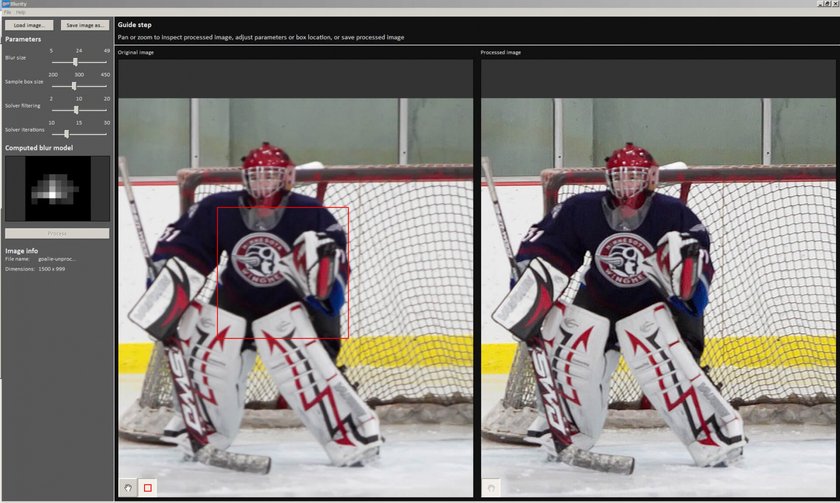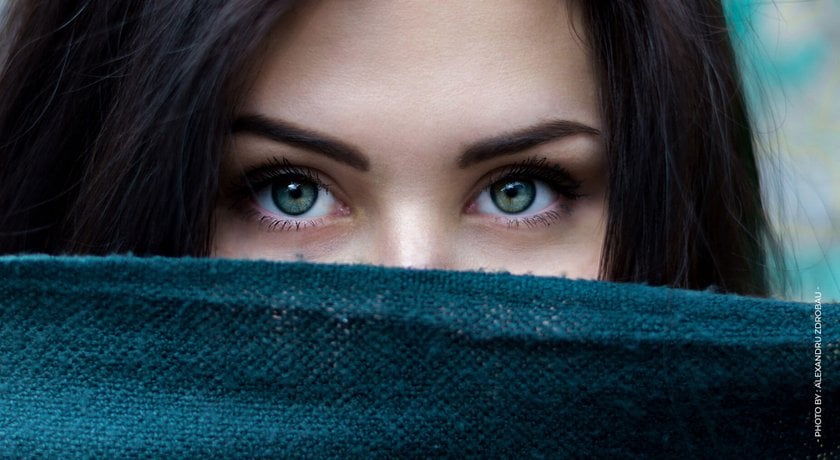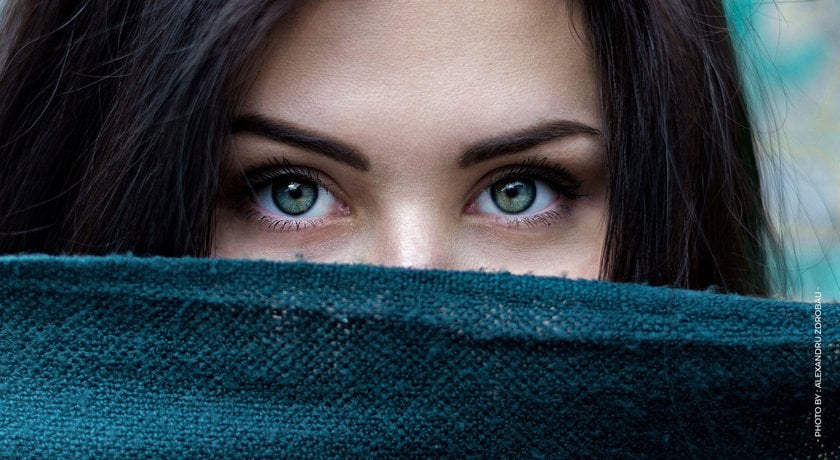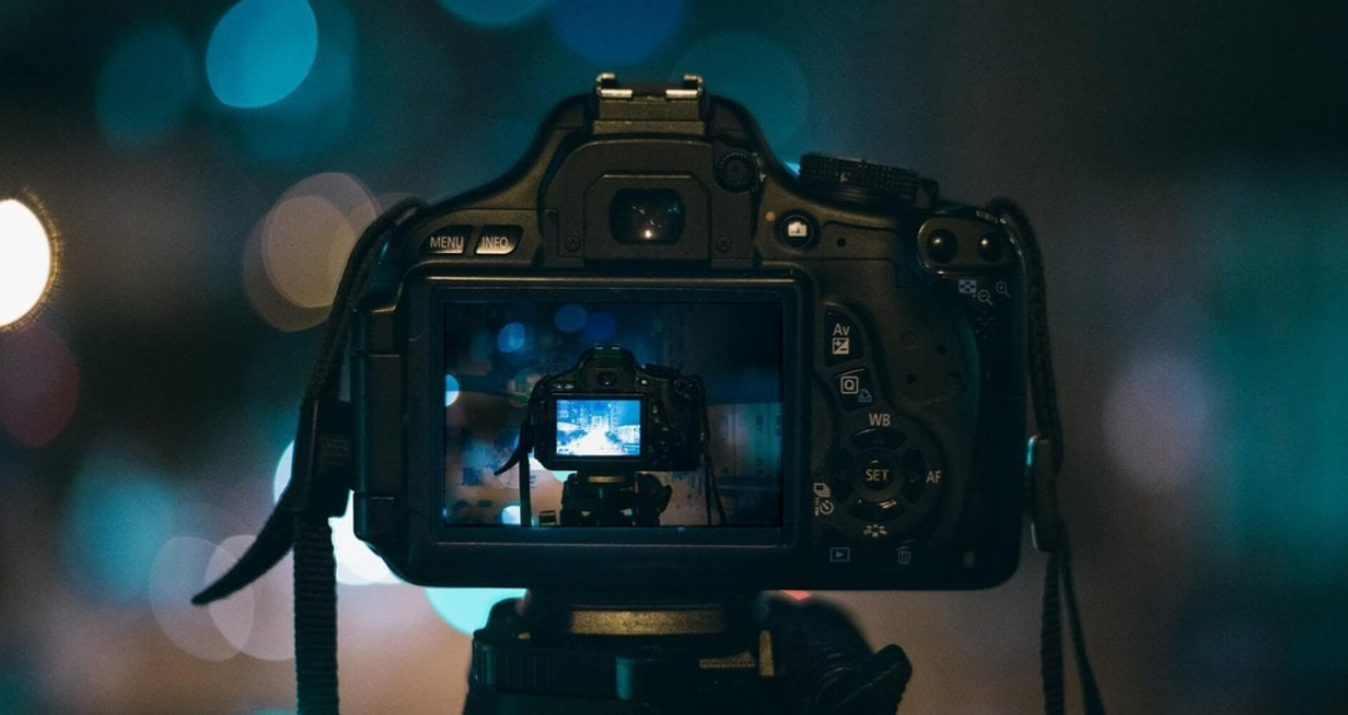圖像銳化:提升照片效果的 10 大最佳工具
June 17, 2025

每一個細節都很重要!別擔心你的圖片模糊、最佳特徵迷失在霧氣之中。立即發掘最新、最智慧的影像銳化軟體,讓你的照片清晰再現。
影像銳化的意思是去除模糊、增強細節並消除霧霾。這是一項所有攝影師都必須掌握的基本技巧。線上影像銳化工具通常用於修復對焦不準的圖片,彌補相機晃動和動態模糊的問題。但在霧濛濛或陰天拍攝的照片中,或是當圖片出現景深錯誤或缺乏清晰度時,也常常需要用到這類工具。
針對各類問題,都已開發出強大的演算法。影像銳化是電腦科學系所與軟體公司研究的熱門主題,因為它廣泛應用於軍事、司法機構與公共行政。然而,攝影師需要的不僅僅是強大的銳化工具,他們更需要智慧型工具,能在不影響影像品質、不增加雜訊或產生不自然效果的前提下,消除模糊並增強細節。他們也需要局部銳化與細部控制功能,才能微調結果。
先進但易用的相片編輯器
立即取得 Luminar Neo如何選擇最適合攝影的影像銳化工具
你應根據用途來選擇適合的軟體。例如,如果你是要修復老照片,可能需要一款功能更強大的照片銳化工具,顏色表現對你來說可能不是那麼重要。如果你從事風景攝影,自然呈現的影像可能更符合你的需求。請選擇符合下列條件的影像銳化工具:
- – 能解決你面臨的問題:從對焦模糊到動態模糊,不同的銳化工具針對不同問題。選擇能處理多種問題並為你提供完整解決方案的工具,例如對焦偏移、模糊、清晰度、結構等。
- – 專為攝影設計:專業攝影軟體更重視影像品質與自然效果,能保持色彩準確、降低雜訊。
- – 可進行區域性處理:有時只需局部調整,整張照片的銳化反而會破壞原貌。尋找能處理選取範圍、圖層與遮色片的工具。雖然學會如何在 Photoshop 中銳化影像需要時間,但這類工具能提供你所需的全部控制能力。
- – 採用人工智慧演算法:AI 可分辨雜訊與細節的差異,甚至能辨識物件或影像類型,並進行客製化調整。
- – 支援批次處理:銳化是基本的影像編輯功能。如果你需要處理大量圖片,批次處理能為你節省大量時間與精力。
- – 支援 RAW 檔案:RAW 檔比 JPEG 保留更多資訊,能提供更準確的細節。若你以 RAW 格式拍攝,請務必選擇支援此格式的影像銳化工具。
- – 價格合理、與設備相容:軟體應符合你的預算、系統與使用程度。如果你只需要銳化一張圖片,沒必要投資昂貴軟體。此外,若你已有影像編輯器,應先尋找可安裝的外掛模組,而非為了銳化功能而重新購買編輯器。
好消息是,市面上已有眾多優秀的影像銳化工具可供選擇,涵蓋各種需求、系統與工作流程。有些專門針對嚴重動態模糊的修復,另一些則提供使用者友好的操作介面與智慧功能。無論你是想要獨立的照片編輯器還是快速的外掛工具,以下是你可選擇的最佳影像銳化工具清單。
1. Luminar Neo
價格: €79
相容性: Windows 與 Mac
優點: 功能強大、自動化的照片銳化工具
缺點: 不支援 Linux
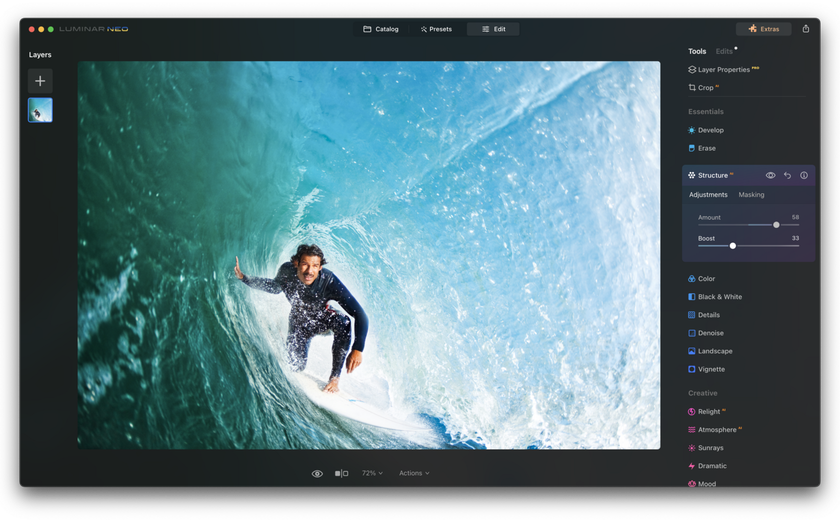
Luminar Neo 是一款功能強大的照片編輯器,提供多種實用工具來銳化影像。它內建數十種濾鏡與效果,至少有三種方式可以增強細節、改善照片品質。最基本的方式是使用「銳化」(Sharpening)濾鏡來強化邊緣細節。此外,Luminar Neo 還提供其他實用濾鏡,例如「去光暈」(Dehalo)用來消除光暈、「清晰度」(Clarity)用來增強中間調邊緣對比,以及「結構」(Structure)與「微結構」(Microstructure)用來增強表面對比度與清晰度,突顯細節。
如果你曾在 Photoshop 裡銳化影像,應該知道那需要不少知識、時間與精力。令人欣喜的是,Luminar 的下一代版本——Luminar Neo,將引入 AI 結構工具(AI Structure)。這項基於人工智慧(AI)的工具可自動增強細節並提升清晰度。AI 結構具有內容感知功能,能針對影像的每個區塊進行個別處理。而且你仍可手動微調——不過你大概也不太需要這麼做了。
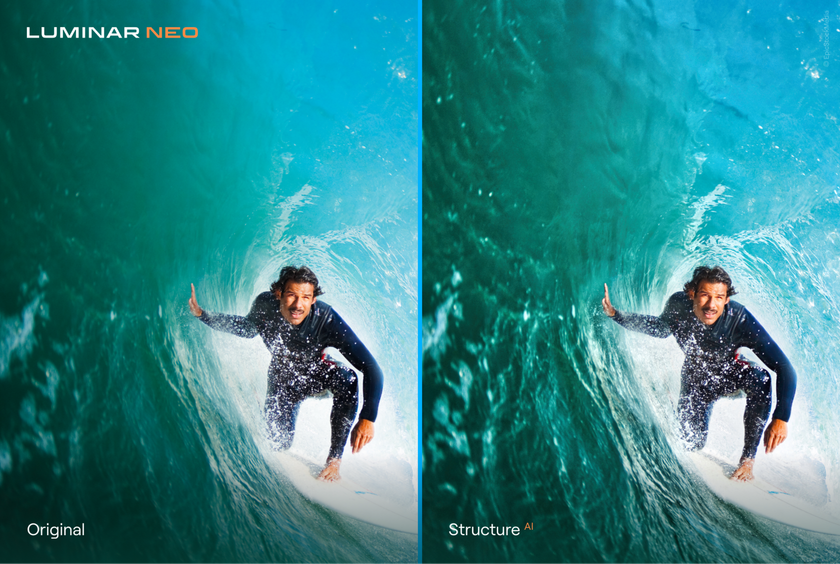
2. Unshake
價格: 免費
相容性: Windows、Mac 和 Linux
優點: 操作簡單
缺點: 處理大型圖片速度較慢
Unshake 是一款輕巧高效的影像銳化工具,專為改善模糊照片而設計。它不是複雜的照片編輯器,但有時你只需要一個簡單的工具來快速修復圖片。Unshake 能勝任這個任務,適合用於網頁品質與低解析度影像,支援批次處理,而且完全免費。
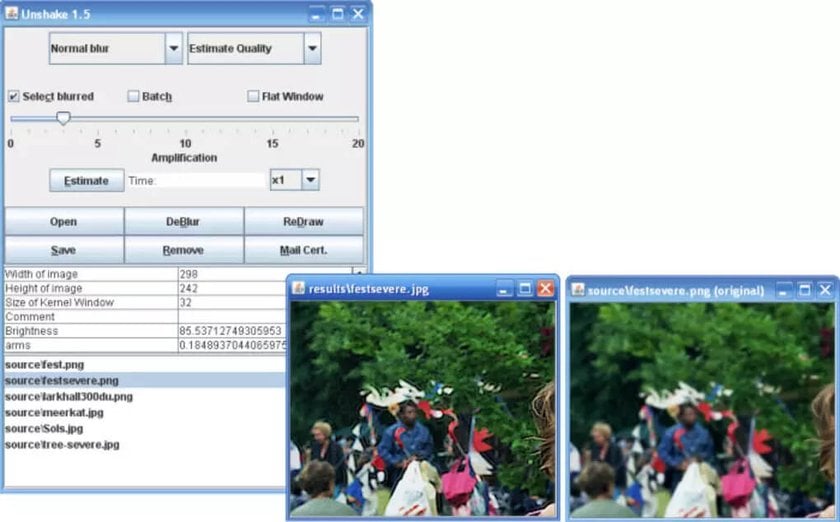
3. SmartDeblur
價格: $98
相容性: Windows 與 Mac
優點: 操作簡單
缺點: 批次處理僅限命令列介面
SmartDeblur 也是一款專業的影像銳化工具,能修復模糊與對焦不準的圖片,對於因相機晃動而模糊的影像可謂救星。它會自動分析晃動模式,找出動態模糊的性質,進而加以反向處理,同時也能解決高斯模糊問題。
儘管提供自動化工具,SmartDeblur 也允許使用者微調銳化流程。此外,它支援 RAW 檔案,對專業攝影師來說非常有吸引力。
4. Movavi Photo Editor
價格: $44.95
相容性: Windows 與 Mac
優點: 可針對局部細節進行調整
缺點: 銳化功能較少,缺乏專業工具
Movavi Photo Editor 不僅僅是影像銳化工具,而是一款具備 AI 功能的全方位照片編輯器。它提供智慧細節增強器,能針對影像中的特定區域進行提升。你可以用它來改善品質較差的區域,或改變物體顏色。
其他功能還包括 AI 自動校正色彩與對比、去除手指與不需要的物件、老照片修復、臉部美容與上妝工具,以及相框設計。Movavi Photo Editor 介面簡單、使用有趣,特別適合業餘攝影師與一般大眾使用。
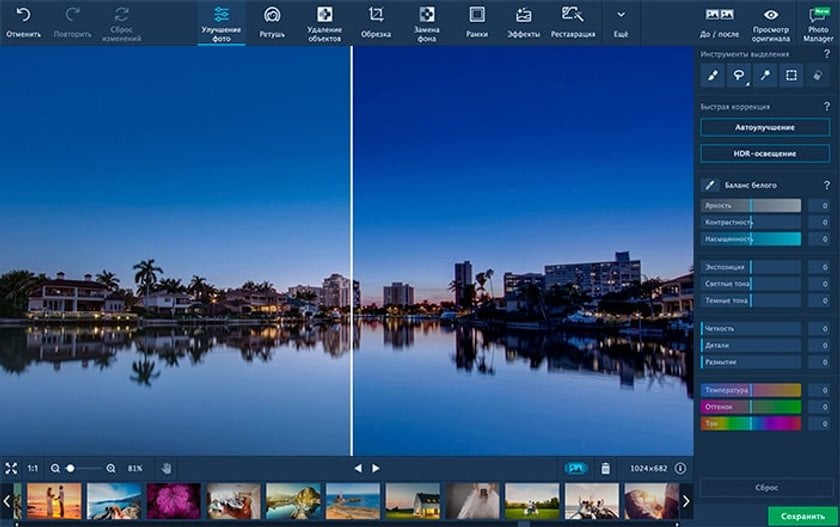
5. Focus Magic
價格: $65
相容性: Windows 與 Mac
優點: 強大銳化能力
缺點: 專用軟體,僅具單一影像編輯功能
Focus Magic 是一款專門用於銳化的影像編輯軟體,採用高階取證等級的解卷積技術來處理模糊問題。推薦用來修復失焦、模糊及老照片。它可處理動態模糊與相機晃動所造成的影像問題。或許它最出色的功能,就是能改變景深,將焦點移動到畫面中的主體,無論其位於前景或背景。
Focus Magic 是一款功能強大的影像銳化工具,廣泛應用於執法機構、軍方、情報單位、美國太空總署(NASA)及大型組織。
先進但易用的相片編輯器
立即取得 Luminar Neo6. Topaz Labs Sharpen AI
價格: $79.99
相容性: Windows 與 Mac
優點: AI 功能可精準區分雜訊與細節
缺點: 作為專用銳化工具價格偏高
Sharpen AI 是 Topaz Labs 推出的影像銳化解決方案。它可作為獨立軟體使用,也能作為 Adobe Photoshop、Lightroom 及 Topaz Studio 的外掛。Sharpen AI 採用人工智慧演算法,能有效區分雜訊與細節,提供自然逼真的修復效果。它內建三個模組,專門處理三種不同的模糊問題:Stabilize、Focus 與 Sharpen。Stabilize 模組可反轉動態模糊並處理相機晃動;Focus 可修正最多達十個像素的對焦模糊,並支援選擇性調整;Sharpen 則適用於輕微的一般性模糊修復。若一張照片同時存在多種類型的模糊,也可以將這些模組結合使用,達到最佳效果。
Sharpen AI 專為專業攝影而設計,無論是人像、風景或動物攝影,都能呈現出色的修復成果。
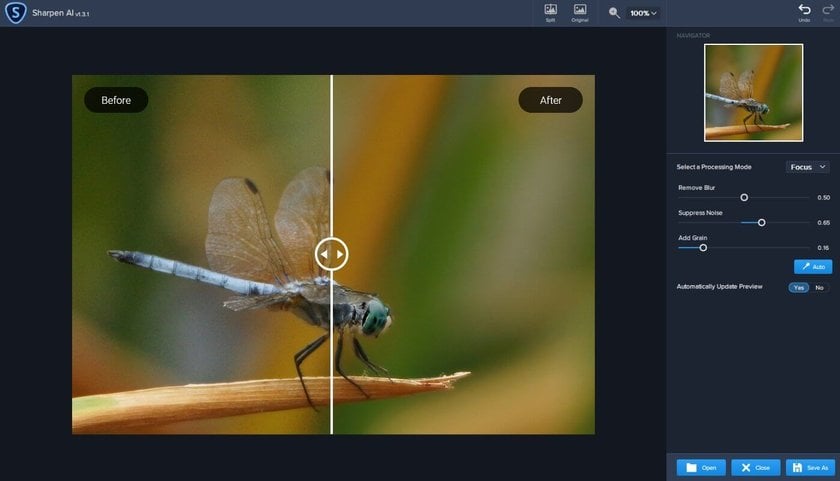
7. Robust Motion Deblurring
價格: 非商業用途免費
相容性: Windows
優點: 基於學術研究的強大影像銳化工具
缺點: 介面簡陋;僅支援 JPEG、PNG 與 Bitmap 格式
Robust Motion Deblurring 是由香港中文大學計算機科學與工程學系開發的研究項目。該團隊研發出一種高效且快速的方法,用以修復含有嚴重動態模糊的圖片。研究涵蓋深度感知、旋轉運動模糊及基於透明度的去模糊技術,並有完整的科學論文記錄整個技術過程。
雖然這套工具缺乏華麗的介面與編輯功能,但它背後的演算法極為強大,能夠取得出色的修復成果。使用者可針對影像的局部區域進行銳化,並成功恢復精細細節與結構。
8. GIMP
價格: 免費
相容性: Windows、Mac 和 Linux
優點: 免費編輯器,銳化功能類似 Photoshop
缺點: 銳化過程較耗時
GIMP 是一款開源照片編輯器,功能與 Adobe Photoshop 類似。它擁有強大的影像處理工具、圖形設計功能,以及創作藝術作品所需的各種功能。若你熟悉 Photoshop 的影像銳化方式,使用 GIMP 也將得心應手。
在影像銳化方面,GIMP 提供經典的「Unsharp Mask」(非銳化遮罩)濾鏡,包含半徑、強度與閾值三個可調參數,並支援高反差濾鏡(High Pass)。銳化流程與 Photoshop 相似,可使用圖層與遮色片調整色彩、對比與色調。
9. Sharpener Pro by DxO
價格: 99.99(Nik Collection 全套插件)
相容性: Windows 與 Mac
優點: 針對列印需求設計的專業銳化工具
缺點: 無法單獨購買,只能隨 Nik Collection 一同取得
DxO 所開發的 Nik Collection 是一組專為專業攝影設計的七款插件,包括 Color Efex Pro、Silver Efex Pro、Analog Efex Pro、HDR Efex Pro、Viveza、DFine,以及 Sharpener Pro。這些插件可與 Adobe Photoshop、Lightroom 以及 DxO 自家照片編輯器 DxO Photolab 搭配使用。
Sharpener Pro 提供兩個銳化階段:RAW 預銳化(RAW Pre-Sharpener) 用來提取影像細節,輸出銳化(Output Sharpening) 則針對列印或螢幕顯示進行最佳化。它能調整對焦、對比與結構,並運用 U Point 技術針對特定區域進行銳化。U Point 技術允許使用者定義控制點,僅修改相似像素的特定區域。此工具亦可根據紙張類型、印表機解析度與機型提供客製化銳化設定。
先進但易用的相片編輯器
立即取得 Luminar Neo10. Blurity
價格: 免費
相容性: Windows
優點: 操作簡單的影像銳化工具
缺點: 僅支援 Windows,介面較為簡陋
Blurity 是一款簡易的應用程式,能在數秒內完成影像銳化。它可移除多種模糊現象,包括動態模糊與對焦模糊。與 Focus Magic 類似,Blurity 採用解卷積技術,不僅能讓文字清晰可辨,也能修復嚴重模糊的照片。
